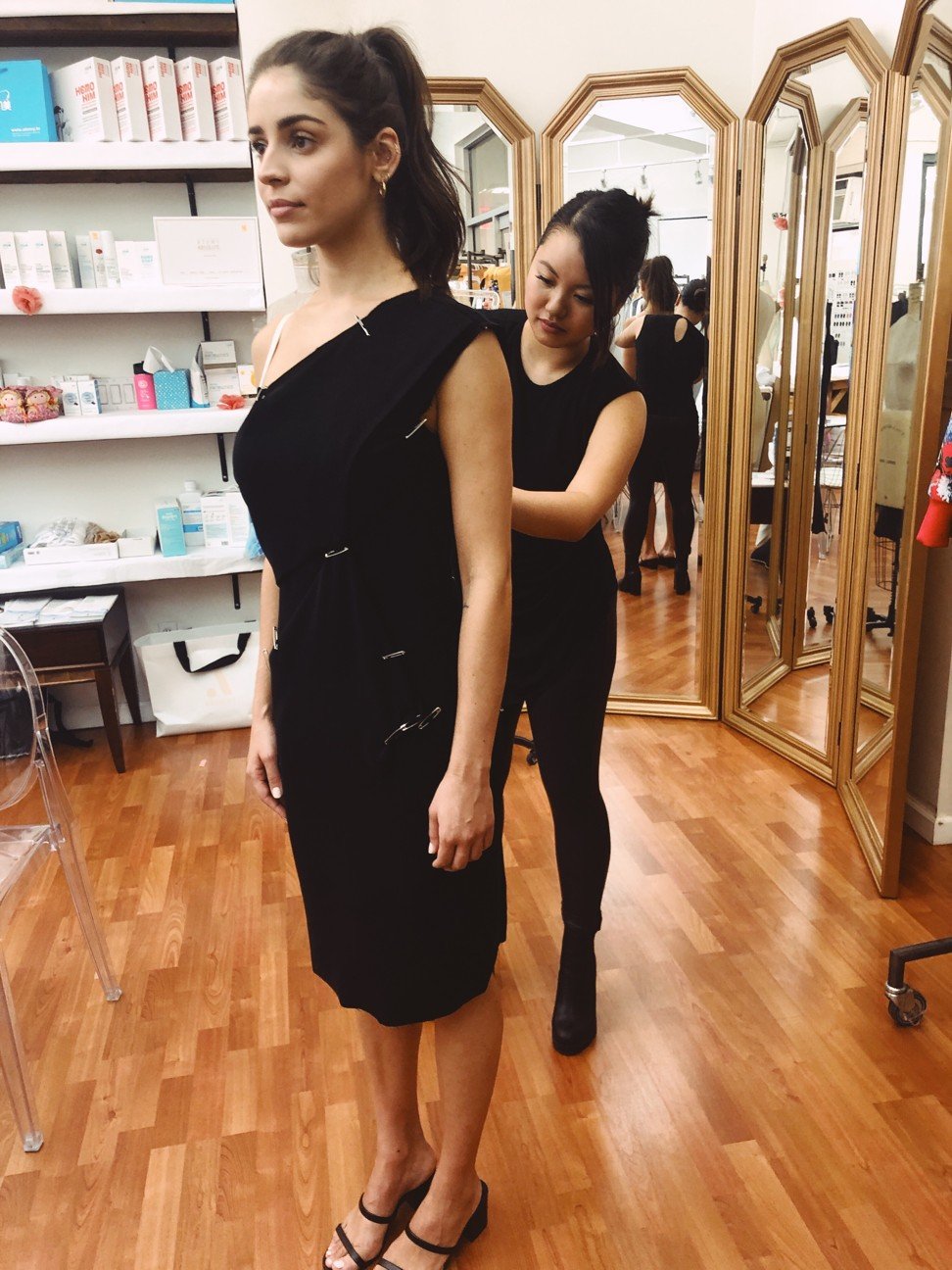
New York-based Australian fashion designer Lisa Qu picks local over Made in China
- ‘The issue with Made in China is not necessarily in the quality but in the quality control,’ she says
- The 22-year-old Parsons graduate says sustainability for her is timeless designs made from high-quality fabrics
Making Forbes’ 2020 30 Under 30 in the Art and Style section is a remarkable achievement for a designer who has been in business barely a year. How did you come to Forbes’ attention? “A few months ago, I received an email from a Forbes journalist informing me that I had been nominated but I didn’t find out who nominated me until later on. It turned out to be two previous Forbes Under 30s who I had dressed for a campaign in 2018.
“We did a video series together [called #HeresYourQU] about empowering women to conquer their goals by offering career advice, motivational stories and tips on dressing for success.”
Who is your target customer? “The Lisa Qu woman is the woman I aspired to be when I grew up. She is powerful, feminine and unapologetically beautiful. Female empowerment is a big part of my brand’s DNA and I design my clothes to highlight the best of being a woman. My customers are women aged 25 to 50 and working in careers such as medicine, law, tech and finance. They range from analysts in graduate positions to C-suite execs at large corporations.”
Why start your business in New York? “When I launched my business, in 2018, I was only 20 and in my third year of college [at Parsons School of Design], in New York. I had access to factories locally and I could take a subway to my factory after and in between classes. I’m neurotic when it comes to the quality of my product and needed to personally oversee everything from development to production.”

Several brands have said Made in China is now as good as Made in Italy or France. Do you agree? “From my experience, the samples I had made in China weren’t of the calibre I wanted for my products even after several iterations. The factories were unwilling to produce my designs using my method of origami construction, which is critical in creating the desired features and structures.
“The issue with Made in China is not necessarily in the quality but in the quality control. I prefer to produce locally so I can personally oversee the quality-control process.”
You claim to care about sustainability and yet use fabrics that feature nylon and polyester. Why the contradiction? “To me, sustainability is about investing in high-quality designs that you can wear for multiple occasions and that will pass the test of time. The most unsustainable thing in fashion is disposable fast fashion, which I try to counteract with timeless designs.
“It’s also why I offer only a small selection of products, to encourage thoughtful consumerism. My choice of fabric is based on the highest quality fibres I could find from Japan, Italy or the US, so I knew they would last for years.”
What next? “I’ve recently launched my first jewellery collection and am exploring other accessories. I want to expand my brand into different areas with petite and curve options followed by menswear and perhaps children’s wear.”


